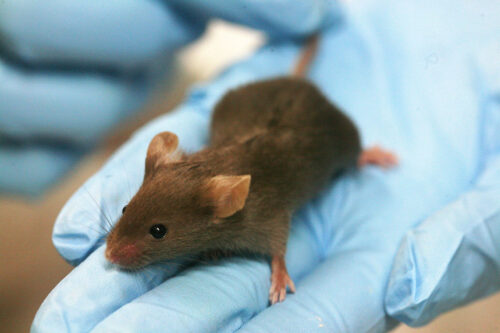Image courtesy of Flickr.
What makes us human? Though the question is often posed in philosophy, art, and other humanities-centered disciplines, scientists in Dr. James Noonan’s lab are investigating it from a biological perspective. Dr. Emily Dutrow, a then-graduate student in the Noonan lab, studied human genes through a different model: humanized mice.
“This is the first instance of our lab generating a [humanized mouse model] project like this, and it opens up the types of studies that can be done in the future,” Dutrow said. The humanized mouse model is a pioneering technology, and Yale leads in this emerging field.
“Yale has a great deal of expertise in mouse embryology,” said Noonan. For example, the Yale Genome Editing Center (YGEC) specializes in creating genetically engineered mouse models for investigators to use in their research. The center utilizes various techniques for these novel models, including CRISPR-Cas9 gene-editing technology, homologous recombination, and cryopreservation.
The Noonan Lab has a special interest in specific sections of the genome called human accelerated regions (HARs). Human accelerated regions are the human-specific areas of the genome that make us different from our primate counterparts. “When I went into graduate school, I was initially interested in very big questions about evolutionary biology and what mechanisms differentiated species,” said Dutrow, who has since moved on from the Noonan Lab to post-doctoral work at the National Institutes of Health. At Yale, Dutrow wanted to study how these HAR sequences made us who we are today.
The Noonan Lab utilized computational techniques to identify potential regulatory DNA sequences conserved between other species but different from humans. HAR2 was chosen because it had the largest acceleration signature or difference from a sister lineage in a primate closely related to humans, but the Noonan Lab plans to study the rest of the HAR sequences in the future.
Dutrow found that HAR2 increases the expression of the gene Gbx2, which regulates limb development. This HAR sequence was introduced into mouse embryos, and comparing their development with a group of mice with a primate-equivalent sequence revealed that HAR2 is involved in altering the rate of human limb development.
“The goal [now] is to study how this change interacts with the other HARs,” Noonan said. The lab’s ultimate goal is to reconstruct a genetic pathway specific to human evolution.
With the success of the Noonan lab’s first humanized mouse model, Noonan and Dutrow are both excited about the prospect of delving deeply into what makes us humans biologically different from chimpanzees or bonobos, our closest genetic relatives. It’s hard not to be excited about this science: how incredible is it that mice are helping us discover the evolutionary and developmental basis of humanity?

